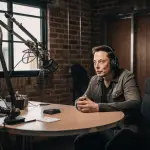Federal Reserve Chairman Jerome Powell appears to have taken a giant leap onto a political tightrope, with inflation climbing higher than a squirrel up a tree since his ill-timed interest rate cuts last year. Initial plans seemed to cater to the Democrats’ desperate attempts to unseat Donald Trump—like that subplot in a B-list movie that just won’t go away.
Back in the sunny, carefree days of summer 2024, many were wondering if Powell was secretly colluding with Kamala Harris’s campaign. With no regard for the inflationary storm brewing, the Fed slashed rates by a total of 1.5%—the equivalent of inviting a fox into the henhouse. Not surprisingly, these cuts didn’t do much to tame the rising cost of living, leading to inflation reaching a decidedly uncomfortable 3% in January 2025.
As a result of Powell’s blunders, the stock market, which had been riding high, came crashing down—losing almost 200 points upon hearing that no more interest rate cuts were likely in sight. Investors, already rattled, were left clutching their wallets as they realized that Powell’s actions only fueled their anxiety about inflation, which now feels like that uninvited guest who just won’t leave the party.
The January inflation report paints a pretty clear picture of the situation: “core” inflation—a fancy word for prices that exclude the usually volatile food and energy sectors—has stubbornly climbed to 3.3% annually. This is not the victory lap the Fed was hoping for, but rather a “Sobering” reality check, according to Austan Goolsbee of the Chicago Fed. It seems even the Fed’s own cheerleaders are beginning to acknowledge the gravity of the crisis.
Inflation Heats Up in January as Powell's Disastrous Interest Rate Policy Is Exposedhttps://t.co/axSAbXGj54
— PJ Media (@PJMedia_com) February 12, 2025
Moreover, remarks from former Fed economists suggest that rate hikes might be more likely than any future cuts, which could spell trouble for Trump’s pro-growth strategies. The new economic landscape under Trump’s second term is promising in theory, thanks to tariffs, tax cuts, and deregulation. However, just like a good game of Jenga, the final outcome heavily relies on how well these pieces hold together without toppling over.
In the meantime, as the Fed hesitates to lower rates, Trump’s calls for action might have to stay on the back burner. As it stands, inflation continues to play coy while the Fed appears to twiddle its thumbs, all while the American public is left wondering what it might take to get some sensible economic policies back on track. If the Democrats thought they had a strategy to stabilize the economy, Powell’s performance has made it painfully clear that they might want to rethink their game plan.




